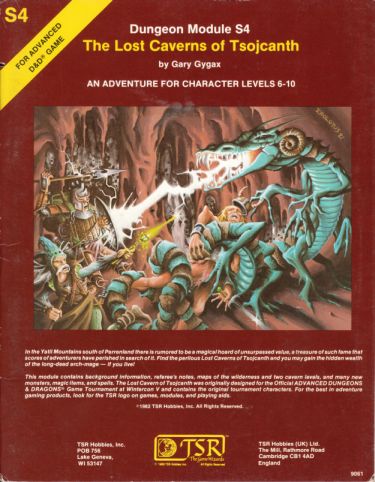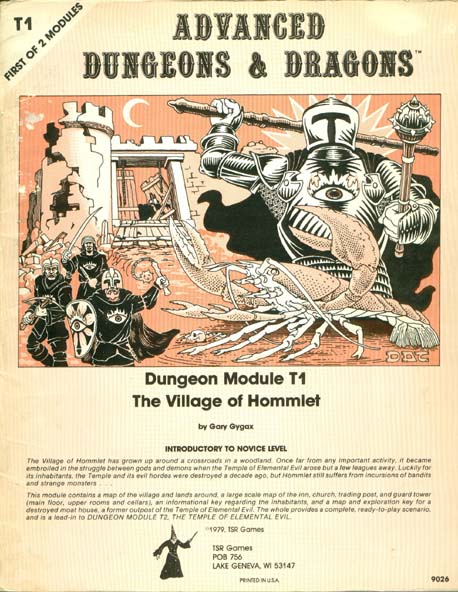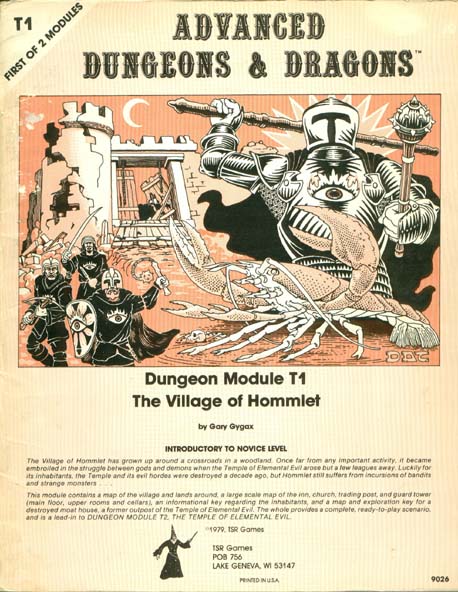I only run published adventures very rarely out of the box. I have run a few – T1 The Village of Hommlet comes to mind – straight as published, but on the whole I look at adventures more as mini-sourcebooks about a facet of the game world (in my instance, Greyhawk, of course), rather than for their adventuring potential in and of itself. I assume this places me in the minority when it comes to consumers of D&D adventures.
This, in large part, explains my fondness for location-based adventures over plot-based adventures.
Even adventures like A1-4 (the “Slavers” series) fall into this category, although I understand they are favorites of Greyhawk fans from way back. I find that I enjoy them more for the information they contain about Highport (A1 Slave Pits of the Undercity), the humanoid stockade in the Drachensgrab Hills (A2 Secret of the Slavers Stockade), the town of Suderham (A3 Assault on the Aerie of the Slave Lords / A4 In the Dungeons of the Slave Lords), and the general idea and information about the Slave Lords, than for the specific plot that the PCs are expected to be following.
 The same goes for a module like S4 The Lost Caverns of Tsojcanth. When it first came out, I was infinitely more excited by the new monsters and magic items (which were eventually incorporated into Unearthed Arcana and Monster Manual II) than I was by the adventure itself. But even there, it’s the background concerning Iggwilv and her conquest of Perrenland, the political situation between Perrenland, Bissel, and Ket, the NPCs included, and so forth that I find most interesting.
The same goes for a module like S4 The Lost Caverns of Tsojcanth. When it first came out, I was infinitely more excited by the new monsters and magic items (which were eventually incorporated into Unearthed Arcana and Monster Manual II) than I was by the adventure itself. But even there, it’s the background concerning Iggwilv and her conquest of Perrenland, the political situation between Perrenland, Bissel, and Ket, the NPCs included, and so forth that I find most interesting.
Even the most plot-driven adventures have information that enrich the setting even outside of the plot itself. NPCs, locations, magic items, and even the events of the plot themselves (used as background, as things that either happened in the past or are happening in the background while the PCs are in the vicinity) can be extracted from such adventures.











I'm very much of the same mind.
I use these modules in a similar fashion. I've been using my own campaign world for 30 years, the Realm of Quindia, but many of the early modules are located in my campaign world. I don't think I've ever run any of them except the Keep on the Borderland. I use elements from the modules in my games.
For instance, last year one of my PC's mentors was captured and sold to slavers. The heroes infiltrated the ruin from A1 to rescue him (and learned of the fort in A2 in the process but have thus far not felt the need to follow up on that). The location had long ago been placed in the world, but I never needed it until that series of games.
The Keep on the Borderlands, White Plume Mountain, and the Hall of the Fire Giant King are all marked on my game maps and most of the original AD&D modules are given concrete locations in my notes. When players are traveling and ask for rumors, I always check to see if any of these are nearby. Characters are more likely to run into agents from these areas than stumble into the dungeons, but the inspiration for adventures often comes from these modules.
I use them for scenario ideas but never as written and not for locales though sometimes for building maps, but I mainly play superhero games so locales are the "real world."
While I played a healthy number of AD&D modules as written, in most cases they spawned spin-off and follow-up adventures.
N2 The Forest Oracle became the focus of a whole mini-campaign. S4 The Lost Caverns of Tsojcanth likewise became the opening act of an entire campaign against Ogremoch and the two levels in the module just the foyer of a megadungeon.
For me, some adventures had a scale that was a little too intimate to spark this kind of expansion (B1, B2, I6) while others (X8, U1-3, and most of the UK line) hit that region-scale sweet spot.